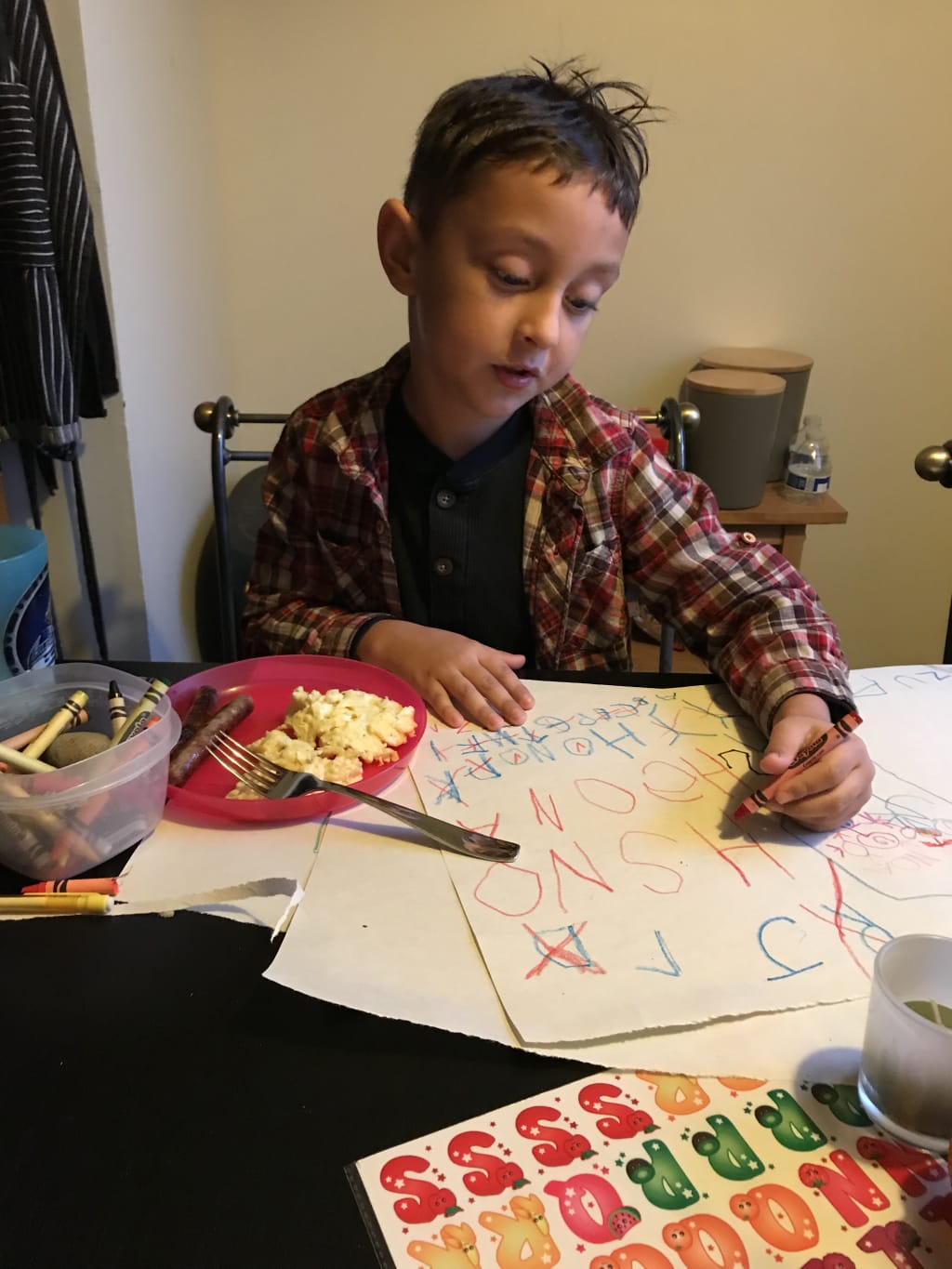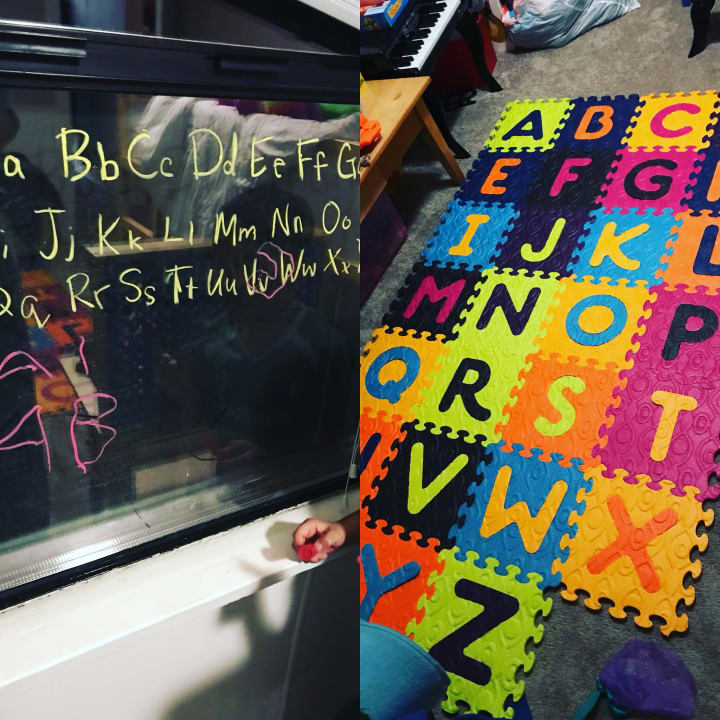5 Ways to Engage Your Active Kindergartener
Aid your child in learning foundational skills when they really don’t want to.

Kindergarten is a tough year for most parents and nearly all children. Once the sadness of separation is gone (I promise it will only take a month or less!), the real challenges may show themselves. The real lesson in Kindergarten is not necessarily the curriculum itself, but in learning HOW to learn.
If you’re anything like me, you want your child to have the highest marks, to be well-liked by every student, and to be a dream for the teacher to work with. Reality is much different than what we desire. My child is an active child. He does not sit still very well, doesn’t pay attention to the teacher, will engage students in play while the teacher is talking. The first couple months of school I would get emails from his teacher that sounded like she was at her wit's end. If this sounds anything like your child, let me tell you, this is completely normal!
It is absolutely normal for a five or six-year-old child to have challenges with attention, and even behaving in a way that is expected of them. So take a deep breath and read on. Here are five tips on things you can do at home to aid their learning process.
1. Become involved.
Becoming involved will help you to understand your child’s daily interactions. Volunteering in the class room, being a coach or assistant coach for their sports teams, maintaining regular contact with the teacher just to touch base. These are all great ways to observe your child, to find out if the issues maybe stem from an external source such as seating arrangements with another active child, or if the teacher is the right fit. When I volunteered in the class I was shocked to find out how many other kids were just as active as my child! Volunteering might also give you an opportunity to mimic some things that work during school hours at home. Giving an experience of minimum shift between home and school life will help your child process events in a more stable environment.
2. Introduce different hands-on activities to promote the school curriculum.

Cycling through different activities will keep study time exciting and fresh. Incorporate different textures and level of physical involvement. For example, if you are able to buy an alphabet mat ($25 at Target), these are great for letter recognition. I would call out a letter and my son had to jump to it. Another example would be window crayons ($5 at Target...I love target!) easily washable with water and cloth and writing on windows is not something someone gets to do every day! Writing out words with pipe cleaners or writing words in sand are other ways of incorporating varying textures.
3. Recognize when your child needs a wiggle break.
Your active child is likely not able to sit and focus for any longer than 20 minutes at a time if we are lucky. Taking plenty of breaks during homework time to change scenery, get fresh air, drink some water can maximize the desire to get the work done when they sit back down. Chances are if they need a break, you might need a break too!
4. Casually expose your child to good influences.
Now, I say casually because chances are, if you were to shamelessly promote “so-and-so,” who can write full sentences, from their class, they won’t feel encouraged so much as they would feel put down. Surrounding your child with children they look up to, who they enjoy the company of, is the best way to elicit the behaviors you want to see in them. It sounds a little mean, and it would be if you black ball certain friends that they also enjoy, but a part of the socialization process during kindergarten is that those around them have the most influence on their own values. If your child spends time with a classmate who enjoys listening to the teacher during story time, chances are your child will want to mimic that behavior.
5. Keep your child active!
Past just playing outside, becoming involved in organized sports is an amazing way to introduce another social structure within a totally different context. At the kindergarten level, sports are more centered around being a good team mate and listening to the coach and your team. It may also give them an opportunity to learn lifelong skills for staying active and healthy as well as gaining new friends.
Please do not feel discouraged if your child seems especially active. It is completely normal and just the fact that you took the time to read this proves that you are a supportive, active parent!
About the Creator
Samantha Rose
Mother of two, student, queer, not into writing bios






Comments
There are no comments for this story
Be the first to respond and start the conversation.